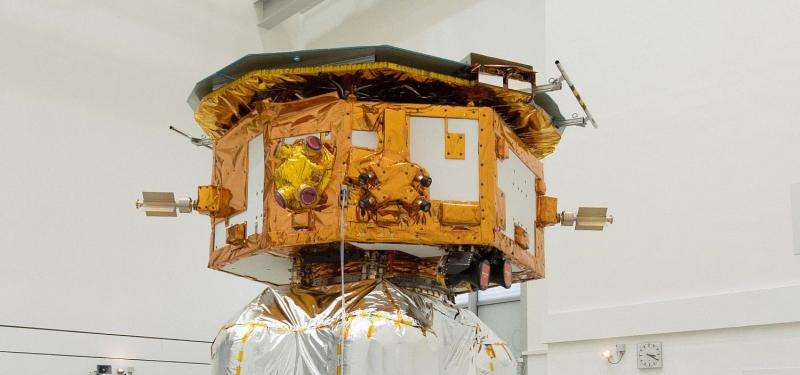Image: Cold gas in deep space

This image shows the LISA Pathfinder launch composite (spacecraft plus propulsion module) at the IABG test centre in Ottobrunn, near Munich, Germany, on 31 August 2015, before it was shipped to the launch site.
In January 2016, seven weeks after launch, LISA Pathfinder reached its operational orbit around 'L1', the first libration point of the Sun–Earth system, a virtual point in space some 1.5 million km from Earth toward the Sun.
Arrival marked the start of what has now become an extraordinary scientific achievement: demonstrating the technology needed to build a space-based gravitational wave observatory (see LISA Pathfinder exceeds expectations).
Any spacecraft orbiting L1, however, will, over time, tend to drift away. As a result, the teams flying LISA Pathfinder must plan and conduct 'station-keeping manoeuvres' every one to two weeks. These gentle 'pushes' – using the same cold-gas microthrusters used for the mission's scientific operations – deliver very small puffs of gas to keep the spacecraft where it should be.
There are three sets of four microthrusters. The image shows one set (with black caps) at centre-right of the spacecraft body. The other set of thrusters with red caps to the left belong to the Disturbance Reduction System, a separate NASA payload.
How small is this microthrust? The devices generate forces of 1–100 millionths of a Newton, much, much less than the weight of any housefly. But it's enough to do the job.
Provided by European Space Agency




















